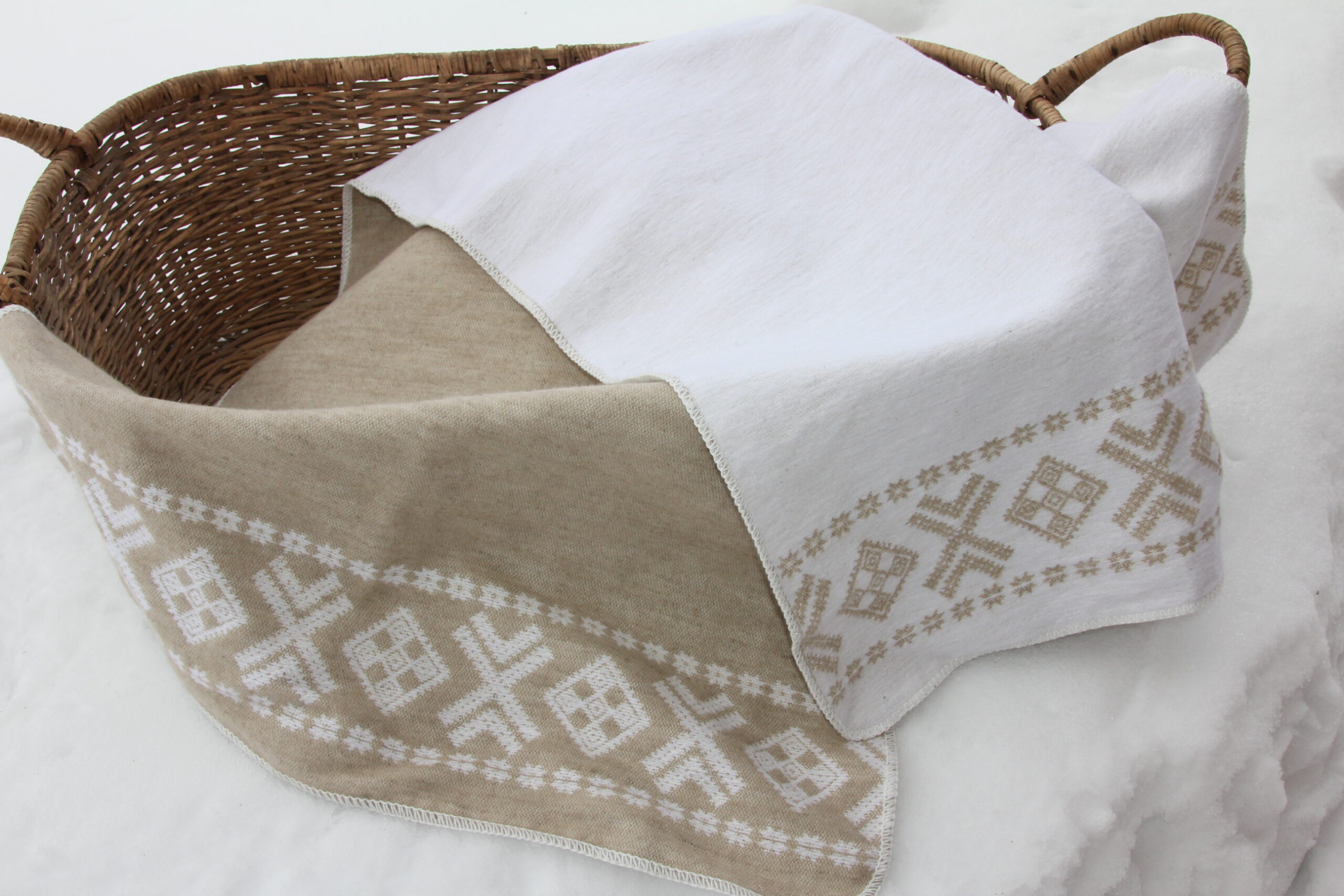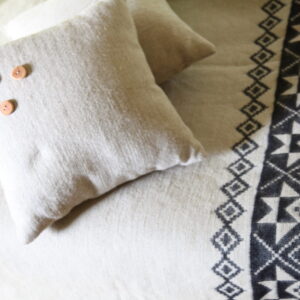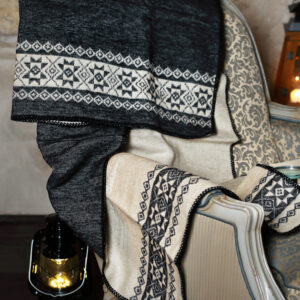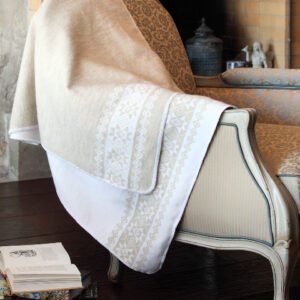Dimensions 66 x 180 cm
70% cotton, 30% flax
In South Estonia, festive woollen rectangle wrap, worn across one’s shoulders, was the most respectable garment. In Põltsamaa, even on the 19th century oblong woollen shawls were worn. White shawl was decorated by using archaic techniques and patterns that had a deep meaning. South Estonian scarf is inspired by the shoulder piece of the Põltsamaa shirt where the pattern has been built up to form an ornament of diagonal cross and a quadrangle. That, in fact, is one of the oldest principles of composition. One of the characteristics of South Estonian handicraft is geometrical embroidery common in the late 18th century. White linen yarn was often used for that. Wrap had a specific role in the Jõgeva County wedding customs. When the bride was brought into the home of the bridegroom, her mother-in-law tied the wrap around the bride’s head, covering the eyes as well.







